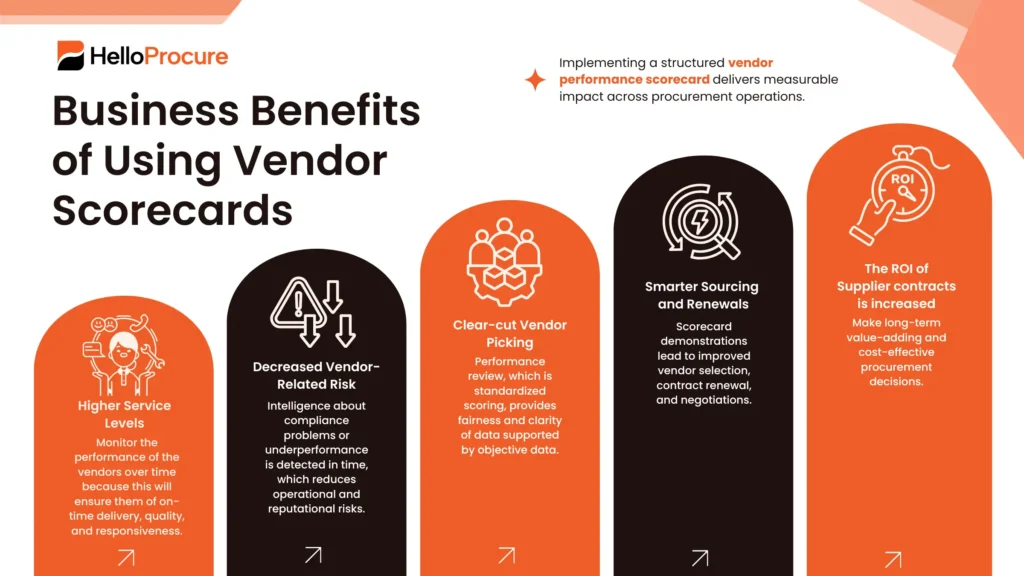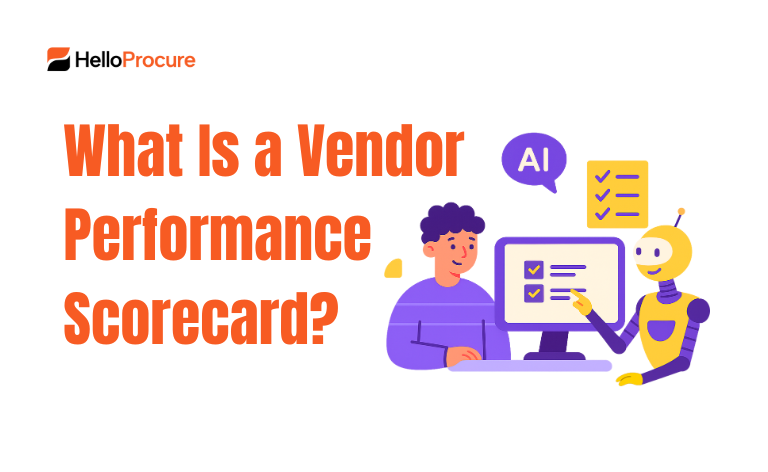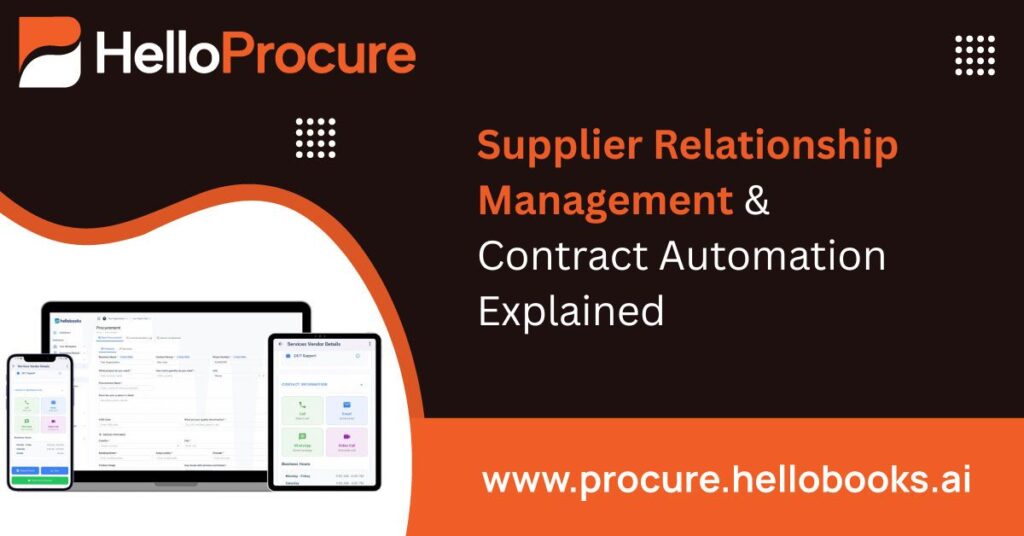The Role of Vendor Performance Scorecards in Modern Procurement
The problem of importance of Vendor Evaluation
The work of vendor management is much more than just entering a contract and paying the invoice. The lack of real-time performance feedback also puts businesses at risk of time delays, quality problems, and failure to comply with regulations, and all these factors directly impact profitability and customer satisfaction.
That’s where a vendor performance scorecard becomes essential.
This guided instrument enables procurement and supply chain departments under the capability to assess vendor reliability, service quality, or compliance in major categories. The supplier management becomes consistent and is accountable as compared to using guts and pockets of complaints.
In this blog, we’ll break down what a vendor performance scorecard is, how it integrates into a broader vendor performance management system, and why it’s critical for strategic sourcing and long-term vendor relationships.
Define a Vendor Performance Scorecard
Businesses can monitor, measure, and assess supplier performance over time with the help of a vendor performance scorecard, which is a standardised framework.
The scorecard can contain the KPIs like:
- On-time delivery rate
- Quality of products or services
- Adherence to contractual obligation
- Cost-effective prices and stability in prices
Respond-ability and talk Business letters are usually written when responding to an inquiry or in writing back to a person who has written to the business.
Procurement leaders can see trends, lower risks, and make informed decisions thanks to these KPIs. Using a vendor performance scorecard, teams may take proactive steps by recognising top performers and addressing underperformance before it impacts operations.
When integrated into a vendor performance management system, scorecards offer even greater value by enabling real-time tracking, auto-scoring, and centralized reporting for all supplier evaluations.

The Need to Have Scorecards in Vendor Management
Supplier relationships can either support company success or pose risks. An organized vendor performance scorecard provides focus for procurement departments to enhance and optimize supplier relationships.
How a performance scorecard helps:
- Gets compliance with contract terms
- Adheres to stable standards of service and delivery
- Flags underperforming vendors
- Benchmarks supplier performance
- Provides renegotiating efforts and renewal choices
When incorporated into a vendor performance management system, these insights contribute to real-time dashboards for smarter procurement decisions.
Central Elements of a Vendor Performance Scorecard
The scorecard’s metrics are tailored to business priorities and weighted accordingly. Here are key metric types:
| Metric Type | Example KPIs | Purpose |
|---|---|---|
| Delivery Metrics | On-time% / Lead time variance | Measure reliability in order fulfillment |
| Quality Metrics | Defect rate / Return rate | Track consistency in product/service |
| Cost Metrics | Invoice accuracy / Price compliance | Monitor cost control and predictability |
| Responsiveness | Issue resolution time / Support score | Evaluate vendor communication speed |
| Compliance | Document completeness / Audit readiness | Verify compliance with safety and legal requirements |
The vendor performance scorecard supports transparency, accountability, and improvement.
How Vendor Scorecards Work Inside a Performance Management System
- Lay down Metrics and Weightage: Define KPIs based on your procurement goals.
- Gather Data regularly: Use ERP, logistics, QA reports, etc.
- Automatic Vendor Score: Scores are generated based on thresholds and performance history.
- Seeing Insights: Dashboards help identify trends and top performers.
- Take Action: Adjust contracts or corrective actions as needed.
HelloProcure enables integration of scorecards into your vendor performance management system.
Business Benefits of Using Vendor Scorecards
- Higher Service Levels: Track delivery, quality, and responsiveness.
- Decreased Vendor-Related Risk: Detect underperformance early.
- Clear-cut Vendor Picking: Use objective scores to choose vendors.
- Smarter Sourcing and Renewals: Improve selection and negotiations.
- Higher ROI: Optimize procurement for long-term value.
Real-Life Use Case: Improving Vendor Outcomes in Retail
A national retail chain used vendor performance scorecards across 250 vendors with notable results:
- 28% increase in on-time delivery
- 35% decrease in quality issues
- Top 10 list inclusion for top vendors
- Underperformers were coached or replaced
Implementing a Vendor Scorecard in 5 Steps
- Strategic List: Focus on high-impact vendors.
- Classify KPIs: Choose key metrics.
- Weightage: Use a standard scoring model.
- Auto Data Collection: Pull data from core systems.
- Review Regularly: Generate reports and take actions.
Integrate your scorecard into a vendor performance management system like HelloProcure for best results.
Elevate Vendor Relationships with Data-Driven Insights
A structured vendor performance scorecard helps businesses benchmark vendors and make informed decisions.
When supported by a vendor performance management system, the process becomes more impactful and scalable.
FAQ: Vendor Scorecards & Performance Management
A vendor performance scorecard tracks supplier effectiveness using KPIs like delivery timelines, quality, responsiveness, and cost.
They increase transparency, reduce risks, and help identify both high and low performers.
Vendor performance scorecards should be reviewed monthly or quarterly.
Ready to track and improve vendor performance?
Use HelloProcure’s performance tools to drive better results. Request a demo now.





